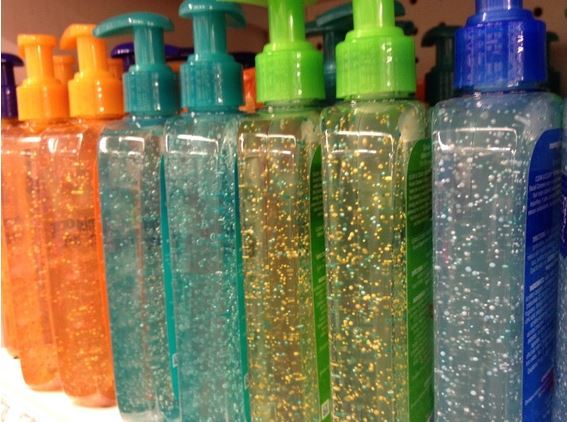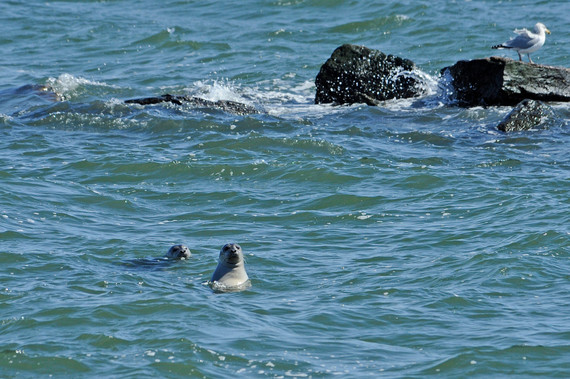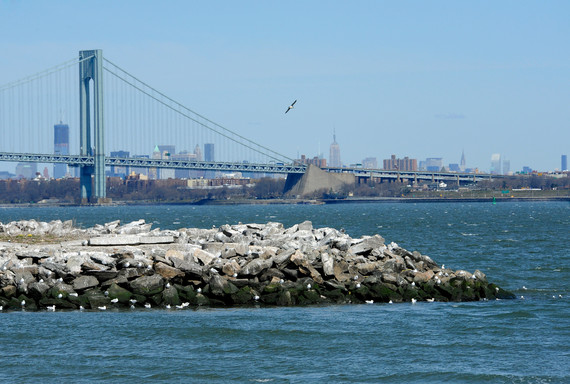If New Yorkers knew they were sending toxic plastic pollutants down their drains and into our waterways every time they washed their faces, most would be appalled. But it isn't apparent to most citizens that "microbeads," the tiny plastic pieces designed to increase abrasion in face washes and other consumer products, are highly damaging to the natural environment and the wildlife that live there.
We should know better.

That is why WCS (the Wildlife Conservation Society) testified today in support of New York City Waterway Protection Act of 2015, which would address the concerns of plastic pollution in our waters, specifically microbeads.
Microbeads are so small, often measuring at a millimeter or smaller, that many wastewater treatment plants are not able to filter them out. Thus, microbeads make it through the treatment plants and into our waterways. Two-thirds of New York's sewage treatment plants do not have advanced treatment technology needed to remove microbeads. Researchers estimate that a single product can contain as many as 350,000 plastic microbeads.
Scientists have discovered high levels of microbeads in waterways throughout New York and the country, which means trouble for wildlife and humans. In New York State alone, 19 tons of microbeads are washed down the drain every year. By their nature, microbeads have chemicals in the plastic. Additionally, chemicals also collect other pollutants on their surfaces from the waters they are submerged in, including DDT and polychlorinated biphenyls (PCBs), which are highly toxic to living organisms. The particles are then ingested by wildlife, which mistake the microbeads for food, and become part of the food chain as larger animals eat the smaller ones.
 Harbor seals pictured in the New York seascape. Photo by Julie Larsen Maher ©WCS
Harbor seals pictured in the New York seascape. Photo by Julie Larsen Maher ©WCS
Several large companies such as Procter & Gamble, Johnson & Johnson, and L'Oreal have already or are beginning to phase out the use of microbeads in their products, which means that the smart corporations already recognize the negative impact and are developing safe alternatives. A strong ban, like that contained in the New York City legislation, is still necessary to make sure microbead-laden products are completely off the shelves and that there are no loopholes that will still allow for microbeads to enter New York's waters.
Some states have passed bills that exempt so-called "biodegradable" microbeads. However, WCS scientist Dr. Emily Darling argues against this exemption in a paper she completed with several other colleagues entitled, "Scientific Evidence Supports a Ban on Microbeads." Studies have shown that depending on the environment that these supposedly biodegradable products end up, the rate at which they actually break down is very uncertain. We do know that it is difficult for plastics to break down in aquatic environments. For these reasons, New York needs a strong ban without such loopholes.
WCS hopes to help New Yorkers recognize and appreciate the wonders of the New York Seascape, and as part of that effort recently launched the Blue York Campaign which strives to develop an ocean ethic for the waters surrounding New York City; protect our ocean wildlife and wild places; and decrease pollution in these waters. Perhaps that awareness will help New Yorkers think twice about what they are sending down their drains.

New Yorkers increasingly recognize the importance of the waters of the New York seascape, and the benefits that come from keeping those waters clean and healthy. Photo by Julie Larsen Maher ©WCS
Until then, through this legislation, New York City has the opportunity to increase the health of its waterways and take a strong, uncompromising stand to ban the sale of products containing microbeads. The City Council should pass this strong ban so we can set a precedent in New York City that can be emulated in Albany and across the country.
